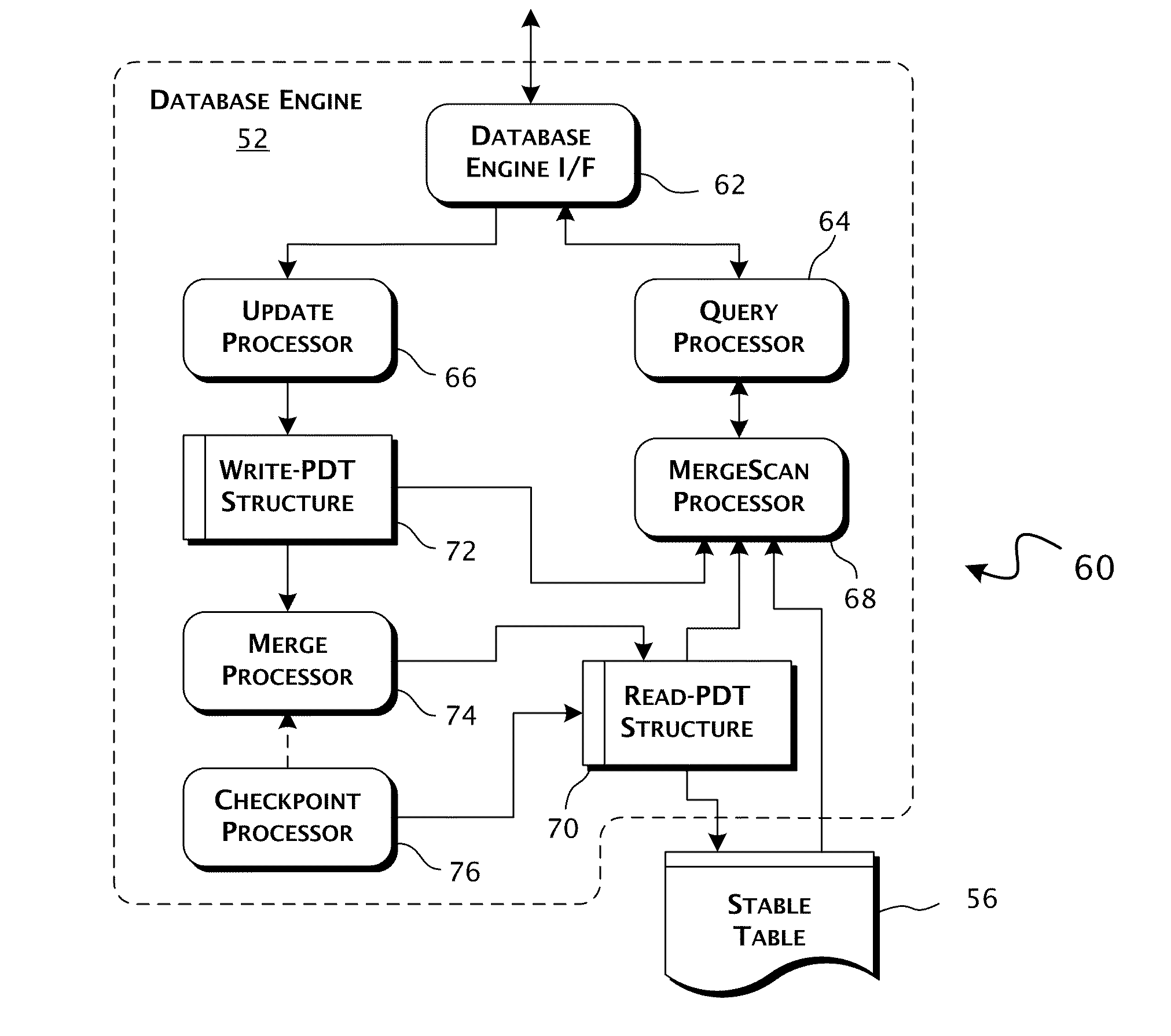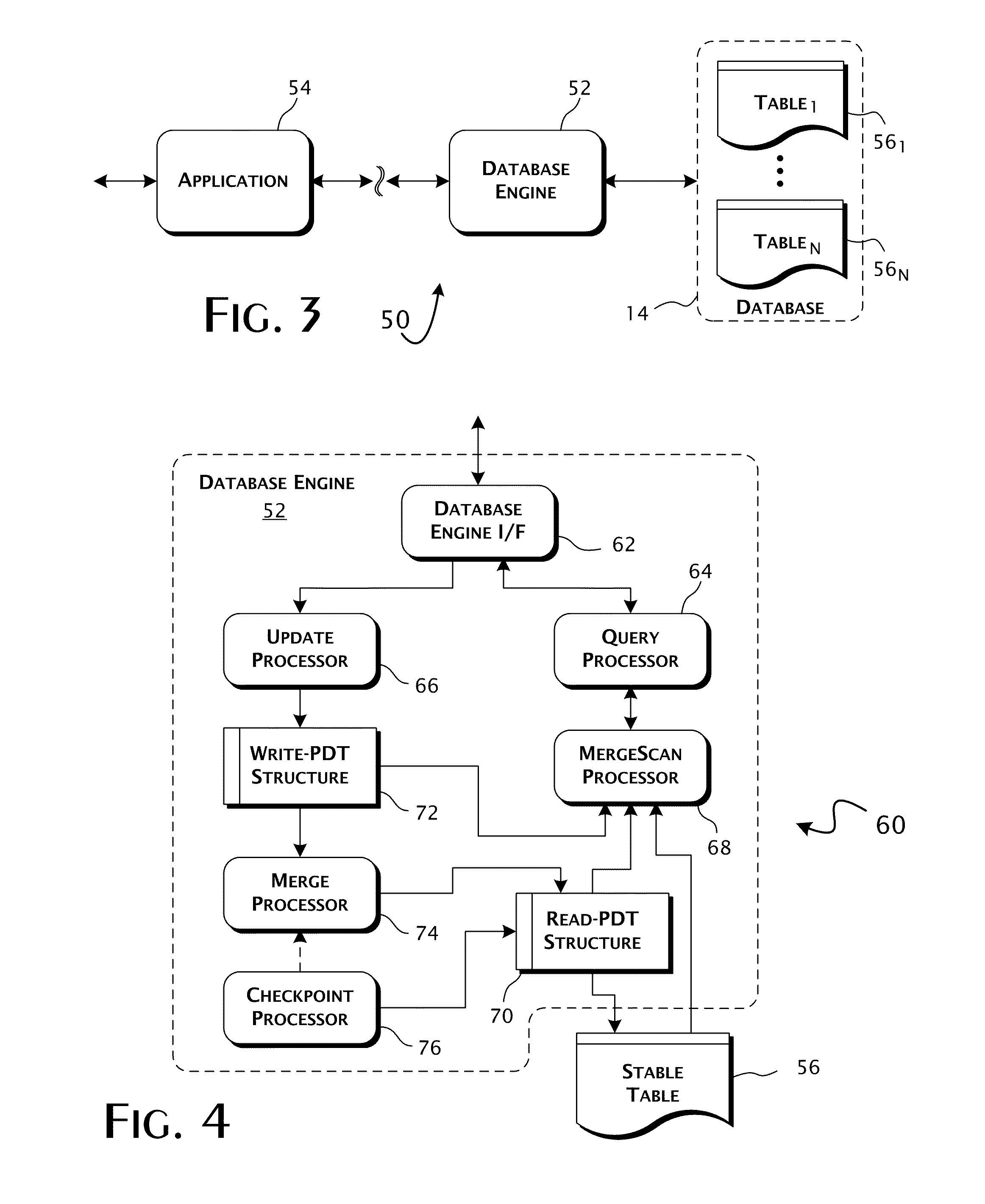Column-store database architecture utilizing positional delta tree update system and methods
a database architecture and positional delta technology, applied in the field of column-store database storage system, can solve the problems of affecting the primary operation of the column-store, the complexity and overhead of read operations are substantially increased, and the read performance penalty associated with the use of the lsmt remains a substantial impediment to the practical adoption and use of column-stores. achieve the effect of reducing the requirements for and impact of database locks on database transactions, reducing computational and i/o resource requirements
- Summary
- Abstract
- Description
- Claims
- Application Information
AI Technical Summary
Benefits of technology
Problems solved by technology
Method used
Image
Examples
Embodiment Construction
[0036]The present invention generally provides a column-store database system and methods of operation appropriate for application areas typically referred to as online transaction processing (OLTP). Column-store database systems implementing the present invention have particular utility in online analytical processing (OLAP) systems that require high performance of complex analytical and ad-hoc queries and in other application areas where accesses of the underlying database tables are read-mostly including, for example, data warehousing, mining, reporting, and business process management and similar areas. Read-mostly database access is characterized by a substantial domination of database table read accesses to update, or write, accesses. In the following detailed description of the invention like reference numerals are used to designate like parts depicted in one or more of the figures.
[0037]A typical application environment 10 of the present invention is generally illustrated in...
PUM
 Login to View More
Login to View More Abstract
Description
Claims
Application Information
 Login to View More
Login to View More - R&D
- Intellectual Property
- Life Sciences
- Materials
- Tech Scout
- Unparalleled Data Quality
- Higher Quality Content
- 60% Fewer Hallucinations
Browse by: Latest US Patents, China's latest patents, Technical Efficacy Thesaurus, Application Domain, Technology Topic, Popular Technical Reports.
© 2025 PatSnap. All rights reserved.Legal|Privacy policy|Modern Slavery Act Transparency Statement|Sitemap|About US| Contact US: help@patsnap.com



